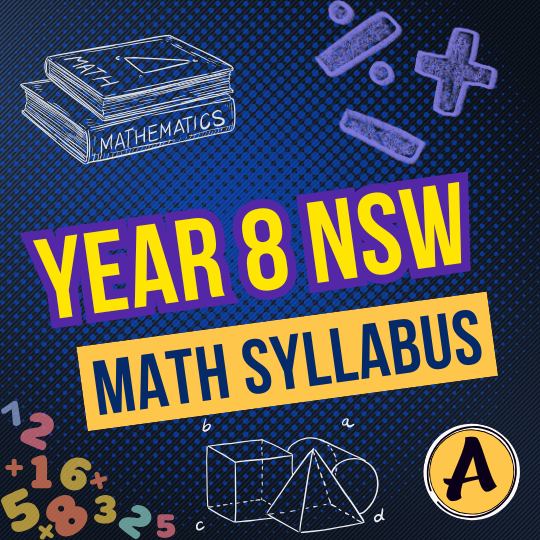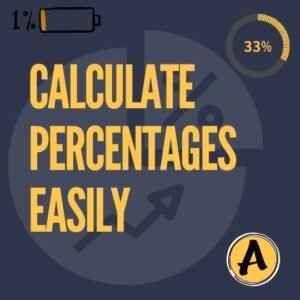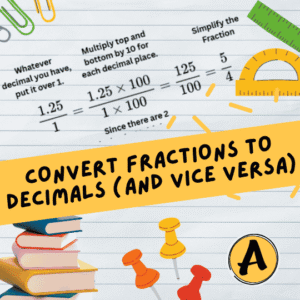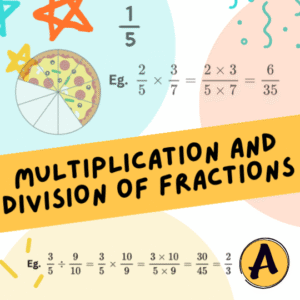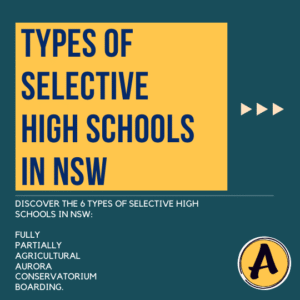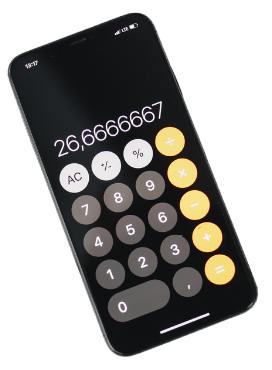Year 8 Maths NSW Curriculum Topics
(Year 8 Curriculum coverage may change from school to school)
Term 1, Year 8 Maths NSW
Percentages
Converting fractions & decimals to percentages.
Discounts, profit, and loss in everyday problems.
Measurement
Circumference and area of a circle.
Solving practical geometry problems.
Rates & Ratio
Simplifying ratios, dividing quantities in given ratios.
Applying rates (e.g., speed = distance ÷ time)
Term 2, Year 8 Maths NSW
Pythagoras’ Theorem
Finding missing sides in right-angled triangles.
Applying Pythagoras in composite figures and real-life contexts.
Geometry (Angles & Properties)
Angles formed by a transversal cutting parallel lines.
Classifying shapes and angle relationships.
Volume, Mass & Time
Volume of prisms.
Unit conversions.
Analogue, digital, and 24-hour time
Term 3, Year 8 Maths NSW
Algebraic Techniques
Simplifying, expanding, and factorising algebraic expressions.
Operations with pronumerals.
Statistics
Mean, median, mode, and range.
Collecting, analysing, and interpreting data.
Linear Equations
Solving equations up to 3 steps.
Substitution and checking solutions
Term 4, Year 8 Maths NSW
Graphs, Tables & Charts
Constructing and interpreting tables, line graphs, bar graphs, histograms, and frequency polygons.
Using spreadsheets for data analysis.
Probability
Simple probability and complementary events.
Predicting outcomes and solving chance-related problems.
Graphing Relations
Plotting and interpreting linear relationships on the Cartesian plane
💡 In some schools, Students are allowed to bring a handwritten double-sided A4 reference sheet. They must use an approved calculator for all exams
Introduction to Year 8 Maths NSW Syllabus
Year 8 is the second year of Stage 4 in the NSW Mathematics curriculum (covering Years 7–8). By now, students build on their Year 7 knowledge and begin tackling more complex concepts such as Pythagoras’ theorem, algebraic techniques, circle geometry, percentages, rates, and probability.
Parents often ask: “Is Year 8 maths hard?” or “What topics do students cover?”. This article gives you a term-by-term guide, showing how Year 8 maths develops problem-solving, logical reasoning, and real-world application skills.
Real-World Applications
Pythagoras’ theorem: Used in navigation, construction, and sports field measurements.
Percentages: Applied in discounts, tax (GST), interest, and profit/loss.
Ratios & Rates: Vital in cooking recipes, maps, speed/distance-time graphs.
Circle geometry: Arc lengths and sector areas are essential in design, engineering, and architecture.
Probability & Statistics: Used in predicting outcomes (weather, sports) and analysing survey results.
For extra practice aligned with the NSW syllabus, students can use Year 8 Special Math Practice Tests
Conclusion
Year 8 Mathematics in NSW introduces exciting and practical concepts such as Pythagoras, percentages, ratios, indices, circle geometry, statistics, and probability. By mastering these, students gain not only academic skills but also practical knowledge for everyday life.
👉 For personalised support, structured resources, and practice aligned with the syllabus, explore our Year 8 tutoring programs and free practice resources at Aussie Math Tutor NSW.
Frequently Asked Questions for Year 8 Maths NSW syllabus(FAQs)
Is Year 8 Maths Hard?
Year 8 Maths can feel hard at first because it deals with topics such as Pythagoras’ theorem, ratios, rates, circle geometry, percentages, indices, and probability.
If a student’s basics are weak, these gaps can make learning new concepts more difficult.
However, with regular practice and support, most students adapt well and gain confidence over time.
Do Year 8 students do algebra?
Yes! In Year 8 Maths, students deal with the following topics in algebra:
Equations (direct algebra with Ratios, Measurements, etc.).
Indices (laws and scientific notation).
Linear relationships (graphs & gradient).
Financial maths (interest formulas).
What is the hardest topic in Year 8 maths?
Many students in Year 8 Maths find algebra challenging. Others struggle with the number plane and Pythagoras Theorem
When should I consider getting a tutor for my Year 8 child?
Many parents notice early red flags when their child begins to struggle with maths. From our experience, the most common warning signs include:
Not knowing which topics they are studying
Simply copying work from the board without understanding
Consistently scoring lower marks than usual
Becoming upset or even crying when faced with maths tasks
Avoiding maths topics whenever possible
Losing confidence in their abilities
Struggling with basic math operations
In more serious cases, falling 1–2 years behind the rest of the class
These struggles often build up quietly, but with early support and intervention—such as targeted tutoring—students can regain confidence, close gaps, and get back on track.
Is Year 9 maths harder than Year 8?
Yes, because it introduces more formal algebra and abstract reasoning, but the progression is gradual. The topics can feel overwhelming at first, but with the right practice and guidance, students build confidence and develop stronger problem-solving skills.
What are the Assessments for Year 8 NSW students?
Assessment is usually a mix of Mathletics quizzes, in-class tasks, and topic tests spread across each term. These contribute to the Semester 1 and Semester 2 reports.
What math level should a 13-year-old be in?
A 14-year-old is generally in Year 8. Students in Year 8 should confidently handle algebra, percentages, and geometry. The syllabus ensures they reach this level.
How can everyday activities reinforce Year 8 Maths concepts?
Instead of teaching maths only as theory or “schoolwork,” it’s more effective to show students how maths is used in everyday life. Practical examples make learning meaningful. For instance, students can:
Calculate fares and choose time-efficient routes to school or the park
Use ratios while cooking recipes
Create a budget for chocolates or treats
Track fitness data such as steps, distance, or calories
These real-world activities not only make maths more engaging but also help students understand why it matters.
What are the best online tools or resources for Year 8 Maths practice?
There are many platforms that provide quizzes, interactive lessons, worksheets, and practical examples aligned with the NSW curriculum. One of the most trusted resources is Aussie Math Tutor NSW, which combines official NSW textbooks, past exam papers, NAPLAN material, thorough research, and expert input from NSW syllabus specialists to create high-quality learning resources.

